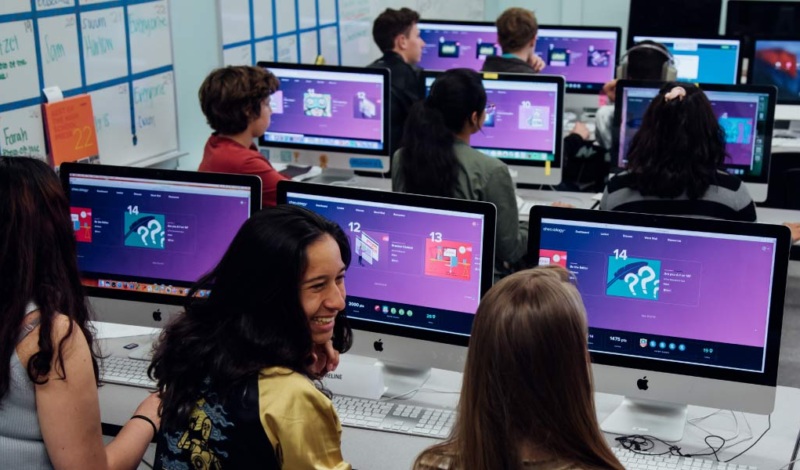
2021, the year in misinformation: News literacy takeaways
2021 marked another year of rapidly spreading misinformation following breaking news events, from the Jan. 6 attacks on the U.S. Capitol to the rollout of COVID-19 vaccines to the Biden presidency. Get ready for 2022 by reviewing our news literacy takeaways from the past 12 months. You’ll be prepared to recognize and debunk falsehoods, conspiracy theories and hoaxes in 2022, and know what information to trust, share and act on.
-
Science misinformation
No, vaccines don’t magnetize you, increase the risk of infertility, contain tracking devices, or cause cancer and HIV. But misinformation surrounding vaccines — along with other science-based topics like climate change — continued to deluge social media feeds throughout the year.
News literacy takeaway: Turn to credible, authoritative sources to confirm or debunk science-related content, such as NLP’s COVID-19 resources page or reputable institutions like the Centers for Disease Control and Prevention. And know that bad actors will even resort to cute cat videos as “engagement bait” to draw you to their sites and spread falsehoods.
-
Protests and crowds
Photos supposedly showing large crowds protesting or supporting controversial issues appeared frequently through the year in misleading ways. For example, this photo does not show a large crowd gathering in Washington, D.C., on Jan. 5, 2021, the day before a demonstration to support former President Donald Trump’s efforts to overturn the 2020 presidential election ended in riots. Instead, it shows people participating in the “March for Our Lives” gun control demonstration in 2018. A photo of mass demonstrations in Moscow in 1991 circulated online as “evidence” of large crowds protesting COVID-19 restrictions and vaccine mandates in Austria in November 2021.
New literacy takeaway: Using photos of large crowds in false contexts is a common disinformation tactic used to exaggerate the level of support for a cause. Do a reverse image search to help you find the original context of a photo.
-
Jan. 6 rumors
The attack on the U.S. Capitol on Jan. 6 resulted in a stream of misleading social media posts, falsehoods, and conspiracy theories that began immediately after the riots and continued throughout the year. A fabricated tweet in October that was attributed to Republican U.S. Rep. Marjorie Taylor Greene circulated online days after social media “sleuths” hatched a baseless conspiracy theory that she was the Capitol pipe bomber.
News literacy takeaway: Conspiracy theorists often engage in motivated reasoning and confirmation bias to manufacture “evidence” for their beliefs. When you encounter a far-fetched or controversial claim, check to see if major fact-checking organizations have debunked it. Or go a step further and do your own research by practicing some basic digital verification skills, like reverse image search, lateral reading and other techniques that fact-checkers use to identify doctored images.
-
Biden Presidency and QAnon
QAnon followers continually promoted false claims that Former President Donald Trump actually won the election and President Joe Biden is either posing as president or is being played by a body double until Trump returns to power. In March, false claims spread on social media that video of Biden speaking to reporters at the White House was staged or manipulated using a green screen or computer-generated imagery.
News literacy takeaway: Be aware that false claims about staged political events are often connected to dangerous and baseless QAnon beliefs. Find videos and posts that debunk the claims through a basic Google search.
-
Misleading gas prices
Misleading photos of unusually high gas prices have been used to try to score cheap partisan points online for years, and 2021 was no exception — particularly as prices rose from historic lows during the pandemic. A November photo from a station in Lancaster, California, displayed premium fuel costing nearly $9 per gallon. But the photo was taken out of context and did not reflect actual prices at the time. Other false and misleading examples can be found here, here and here.
-
Empty supermarket shelves
Supply chain problems in the news sparked numerous misleading social media posts, photos and videos, exaggerating the problem or falsely assigning blame. Posts featuring photos of empty supermarket shelves claimed that President Biden’s policies were responsible for food shortages. But the photos were used in false contexts. Some were taken in Australia and England. A photo of empty shelves in South Carolina was from 2018.
News literacy takeaway: Viral rumors presenting photos of empty store shelves are common during disasters and other events that cause disruptions in the supply chain. Be wary of such photos and seek out trusted, standards-based news sources for accurate coverage of supply chain issues.
-
Staged skits out of context
Faked scenarios tied to real events and aimed at building followers on TikTok and other platforms continued as a trend. A video from November that appeared to capture a conflict among crew members on a commercial flight and a passenger demanding a seat change after another passenger refused to show proof of vaccination was actually staged for a short film.
News literacy takeaway: This film was produced by a social media influencer with a history of creating films designed to go viral. Such videos often are published without disclosures that they’ve been staged. These videos can seem authentic at first because there are genuine cellphone videos of fights over COVID-19 rules on planes. Search online to see if a video has been debunked; the fact-checking site HoaxEye found selfies posted by the film’s creators.
-
Vaccine harm claims
Each development in the COVID-19 vaccines rollout — from approval by the Food and Drug Administration, to private company mandates, to the inclusion of shots for children — has sparked viral rumors. As the year began, celebrity deaths, like that of baseball icon and civil rights activist Hank Aaron, also were immediately and falsely tied to vaccines. Rather, Aaron died of natural causes at the age of 86 on Jan. 22.
In November, a photo of a vaccination clinic in Foxborough, Massachusetts, was digitally altered to push an anti-vaccine narrative. Text in a sign in the photo said that COVID-19 vaccines were available without an appointment — but was changed to read “Don’t forget to donate your childrens (cq) organs.”
News literacy takeaway: Many claims of vaccine harm involve sheer assertion and false context. Text on signs, for example, is easy to alter with photo manipulation software and is a common target of bad actors online. Check credible sources regarding the accuracy of any claims regarding vaccine harm, including those that tie deaths or injuries to vaccines. See our lateral reading guide for more tips.
-
Celebrity t-shirts
Doctored images of celebrities wearing t-shirts with provocative slogans were shared widely … again. This post featured George Clooney with a shirt that compared MAGA supporters to Confederates and Nazis. Another showed Captain America actor Chris Evans wearing an anti-Trump shirt. But in both cases the political messages had been digitally added, and the original photo of Clooney was taken in 2015.
News literacy takeaway: Printed messages, including those on t-shirts, are particularly easy to alter and should always be approached with skepticism — especially when they spark a strong emotion or confirm your biases. Also, many of the provocative t-shirt designs that have been digitally added to celebrity photos were created for profit and sold online.
-
Outrage bait
Posts and tweets designed to evoke strong emotional reactions remained a fixture on social media. A tweet took a statement from Florida Republican Gov. Ron DeSantis about COVID-19 vaccine mandates out of context to falsely push the claim that Florida schools will no longer require any vaccinations, even for polio, measles and mumps. Critics of vaccine mandates seized on the cancellation of thousands of Southwest Airlines flights in early October to spread baseless rumors that the service disruptions were due to pilots and crews refusing to work to protest the policy.
News literacy takeaway: Outrage and anger drive engagement on social media. Users casually scrolling through their feeds may react without pausing long enough to figure out a tweet like this was inaccurate, especially if they have strong feelings about the topic. DeSantis said only that there would be no mandate for children to get the COVID-19 vaccine. The Southwest cancellations were due to air traffic control issues and bad weather. Follow our “Sanitize before you share” infographic to help you avoid unintentionally spreading misinformation.

